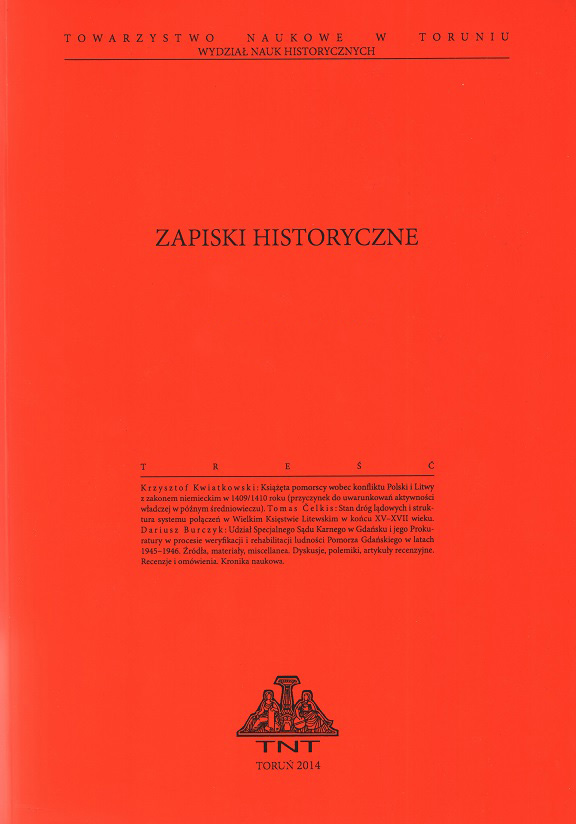Wyprawa zbrojna Krzysztofa Radziwiłła „Pioruna” w Inflantach zimą 1579 roku
The Military Expedition of Krzysztof Radziwiłł „Perkūnas” to Livonia in the Winter of 1579
Author(s): Karol ŁopateckiSubject(s): Historical Geography, Military history, Political history, 16th Century
Published by: Towarzystwo Naukowe w Toruniu
Keywords: itinerarium;military cartography;Kierepeć;Kirempe;Dorpat;Tartu;Livonia;the 16th century;
Summary/Abstract: The article presents the Lithuanian expedition carried out in Livonia in the winter of 1579. On the basis of the itinerary [itinerarium] and iconographic and written sources it has been established that three regiments were to act in a coordinated manner to conduct the military action against the Russian Empire. All the three regiments were to set off from Kieś [Wenden] and through different ways reach Dorpat [Tartu] occupied by the Russians. The whole expedition included about 200 cavalry soldiers and about 400 common infantry soldiers [Polish: drab] along with several light artillery and a numerous lager. Owing to the activities undertaken by the three regiments, destructions were much more extensive, more loot was acquired and military successes were more significant – the castle of Kierepeć was conquered. The activity of three separate regiments confused the enemy and prevented them from undertaking the effective defence. The expedition was carried out from 16 February to 6 March, which also affected its outcome. The late winter provided the best conditions for the land communication, while the upcoming thaw made it impossible for the enemy to launch the counter-defence. It resulted in the safe return to Kieś and a lack of Moscovite units sent from Dorpat. To my way of thinking, the winter expedition of 1579 to Livonia was the best example of the manoeuvre art of the Polish-Lithuanian army in the 16th century.The routes of two regiments (the left one and the central one) ran close to each other, while the third one (the right one) had a totally different route entering the Russian lands from the back. The right regiment was commanded by the Oberst [Colonel] of Courland Jürgen Buttler, who conquered the castle of Kierepeć [Kirempe]. The main unit was commanded by Krzysztof Radziwiłł nicknamed “Perkūnas”, who plundered the vicinities of Dorpat. The analysis of the itinerary of 1579 prepared by Krzysztof Radziwiłł indicates that the mile recorded there corresponded to 8 kilometres. The average daily velocity of the expedition Kieś–Dorpat–Kieć amounted to 21.55 km, which corresponded to 2.7 miles. During the expedition the regiments covered from 250 to 310 km, which along with the return journey amounted to 500 km.
Journal: Zapiski Historyczne
- Issue Year: 83/2018
- Issue No: 1
- Page Range: 39-67
- Page Count: 29
- Language: Polish

